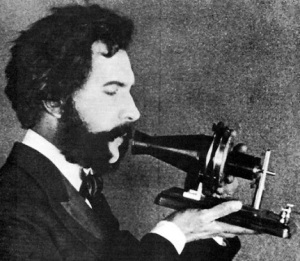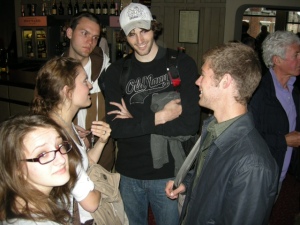In my last post I suggested that when it comes to marketing, most arts leaders lack basic competence. I don’t mean this as an insult; it’s a simple description of reality. When compared with the broader marketing profession, arts marketing is an insular, amateurish, old-fashioned enterprise, and since most executive leaders learn what they know about marketing as they rise through the the nonprofit ranks, they arrive in their positions sorely underprepared to make professional marketing decisions.
This is why the arts are in so much trouble. The people who lead the industry, and who presume to make its ultimate marketing choices, don’t know enough about the way real marketing works to attract sustaining audiences.
 You don’t have to be a marketing genius to lead a well-marketed organization of course, but you do need to know some fundamentals and you need to have some management tools at your disposal to avoid perpetuating the industry’s counterproductive traditions. Most of all, you need the wisdom, humility and self-restraint to avoid inserting your own amateur opinions into the marketing process. This may come as a bit of a shock, dear executive arts leader, but you don’t get to have final say anymore just because you’re the boss. That’s not the way marketing works in professional settings.
You don’t have to be a marketing genius to lead a well-marketed organization of course, but you do need to know some fundamentals and you need to have some management tools at your disposal to avoid perpetuating the industry’s counterproductive traditions. Most of all, you need the wisdom, humility and self-restraint to avoid inserting your own amateur opinions into the marketing process. This may come as a bit of a shock, dear executive arts leader, but you don’t get to have final say anymore just because you’re the boss. That’s not the way marketing works in professional settings.
So if you’re an arts exec who lacks a legitimate academic or professional background in marketing, but wishes to guide your organization in a more productive direction, here some tools you can use in your marketing meetings that will help you lead your staff toward unprecedented results:
THREE QUESTIONS COMPETENT LEADERS ASK IN MARKETING MEETINGS
1. What do we know?
Effective marketing discussions begin with a thorough examination of what the organization knows about its situation and its markets. A good leader will expect her team to come to meetings prepared with abundant factual data describing a broad range of internal and external realities. At a minimum this will include detailed sales figures and plenty of market research results.
Arts marketing ends up being amateurish because it’s so often driven by insiders’ opinions rather than by objective, external facts. If you want to do professional marketing, banish opinions entirely from the process (especially your own) and focus exclusively on what can be known. A good way to do this is to strike the phrase “I think…” from all meetings and insist that participants begin their contributions with “We know…” instead. (The first few such meetings will be conspicuously brief.)
For most arts professionals this will be agonizing. Collecting accurate, useful data is hard work and poring over dry figures for thirty minutes before looking at designers’ mockups isn’t fun. But if you develop the habit of acquiring and thoroughly analyzing objective data at the beginning of each meeting – without giving in to idle speculation – you will be far more successful. (I adopted this habit working for Disney and last time I checked they were doing pretty well.)
2. How does this work?
Marketing is a process of understanding what consumers want and then motivating them to act by describing how your products will satisfy their desires. It’s a bedrock formula that underlies all effective persuasion. The only way to know if your marketing works is to ask if it fits this formula, so a reasonable answer to the question might sound like this:
“We know from our focus group research that younger audiences are looking for peripherals that enhance the concert experience such as drinking and socializing with peers. The campaign we’re presenting today features photos of the target demo having fun and enjoying drinks in the lobby bar. It works by allowing younger audiences to see themselves enjoying time with friends as a part of the concert experience.”
Amateur arts marketers usually can’t describe how their marketing works because they don’t follow this formula and they haven’t gathered the objective data they need to know what their target demo wants. You can’t describe how marketing works if it hasn’t been created in response to your customers’ stated desires. And, needless to say, if your content was created in response to what you think people want, or assume people want, or hope people want, rather than what they actually told you they want, it’s amateur bullshit.
The more time and energy you spend focusing on what you know to be true about your audience’s desires, the easier it will be to create marketing that motivates them – and the easier it will be to describe how it works. (Note: You’ll have to know exactly who your potential audiences are and you’ll have to do research to learn what they want.)
What will it do?
Good marketing is predictable. If you know what your target audiences want and you make smart, rational choices in demonstrating how your products will satisfy those desires – and you do it repeatedly – you will be able to project results with surprising precision. A reasonable answer to this question might sound like this:
“We know from our focus group research that younger audiences are looking for peripherals that enhance the concert experience such as drinking and socializing with peers. The campaign we’re presenting today features photos of the target demo having fun and enjoying drinks together in the lobby bar. It works by allowing younger audiences to see themselves enjoying time with friends as a part of the concert experience. We are projecting an 18% increase over last season in this demo based on the quality/consistency of our research findings and year-over-year trending from similar past strategies.
Marketing results can’t always be pinpointed to the penny, but the more facts you use at the beginning of the process, and the more rational methods you apply in the content development phase, the more accurate your projections will be. Compare this to the traditional method, which involves having a group of well-meaning but under-informed insiders sitting in a conference room guessing what people want and dreaming up creative ways to tell them about upcoming events, and you’ll see the difference between amateur and professional approaches.
Arts administrators have long believed that marketing is a creative endeavor that’s well suited to smart, clever, creative people, but that’s just self-indulgent nonsense. Marketing is a science where creativity and the opinions of the organization’s highest-paid person are of severely limited value. The day the arts embrace marketing as a rational, fact-based, professional enterprise is the day that audiences will stop disappearing and traditional arts organizations will begin growing again.
But that day won’t come until arts leaders stop pretending to be marketing experts and begin letting facts and rational methods guide their choices.
If that day never comes, arts leaders have only themselves to blame.











